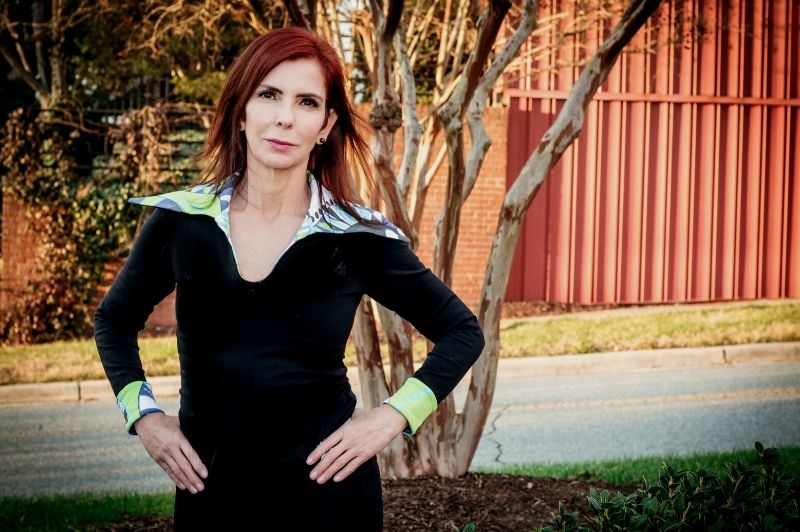BurnOut Kuel Category Expert: Liza Baker
Anxiety. Brain fog. Depression. Dizziness. Dry skin. Heart palpitations. Increased blood pressure. Insulin dysregulation. Insomnia. Low libido. Thyroid dysfunction. Weight gain.
While the lists of symptoms of burnout (more officially known as HPA axis disorder) and perimenopause are long and gory, it’s striking how many of them overlap.
Is it any wonder that women 40+ often don’t know exactly what’s hit them?
Mission-Driven, At Work And At Home:
“We spend our days serving others.”
The preventative healthcare needs of women 40+ are vastly different from those of men and younger colleagues. Pre-pandemic data show that between 2014–24, the labor force growth rate of older employees is expected to be 55% for those over 55 and 86% for those 75+. We can compare that with a 5% increase for the labor force as a whole, which means that more women in menopause will be (re)entering the workforce. Many of them in mission-driven fields.
Stressors in our lives include bearing a disproportionate amount of the mental load of running households. Which, more and more frequently, includes not only younger children but boomerang adult children and members of the older generation—in addition to the onset of perimenopause.
And for a number of reasons—including that many of us are in relationships where our benefits come from a partner’s place of employment—women tend toward mission-driven fields. We make up 75% of the nonprofit sector as well as 77% of public schoolteachers and 91% of nurses.
Women who work in mission-driven fields face an added pressure. While failure in the corporate world equates to not making a profit, failure in the mission-driven sector can mean that a child goes hungry, a teenager commits suicide, an elderly person dies alone, a community fails to thrive.
Working daily under this sort of pressure compounds the domestic stressors noted above and is likely to cause burnout to an even greater degree. And during the pandemic, our mental load has increased more than that of the guys. We spend our days serving others. Only to spend our non-working hours tending to others as well.
The Good, Better, And Best News:
“the more serious your symptoms, the longer you’ve been ignoring your body”
That sounds like a lot of doom and gloom, so let’s practice a little reframe. Whatever symptoms you’re experiencing, let’s look at them as a message from your body that something is not quite right. They’re not something to be squashed and pushed past: they’re something to listen to and get curious about. Generally, the more serious your symptoms, the longer you’ve been ignoring your body.
As Christiane Northrup says about perimenopause in The Wisdom of Menopause, each month we get a tap on the shoulder to take care of ourselves: it comes in the form of our period.
- If we’ve paid attention, slowed down, and cared for ourselves more intensely during the bleeding part of our cycle, we’re more likely to have a smoother perimenopause.
- If we’ve ignored the gentle nudge and pushed through, our symptoms may well have become more intense or we may have experienced more of them. And if we continue to ignore them, perimenopause comes on as the body’s Hail Mary: it’s like the tap on the shoulder becomes a 2×4 to the head.
Without getting into the intricacies of hormone dysregulation—which is at play in both burnout and perimenopause—there are a number of actions we can take on our own to take better care of ourselves and shore up our health.
The good news is that these interventions don’t require a diagnosis. The better news: for the most part, they’re free. The best news? These recommendations can help you optimize your health even if you aren’t in burnout or perimenopause—which may just keep you from experiencing burnout or a difficult perimenopausal transition to begin with.
Getting Started:
In my work as an Integrative Nutrition® health coach, I operate on a few basic principles, the most important of which are:
- Bio-individuality: the idea that each individual has unique food and lifestyle requirements to achieve optimal health.
- Primary and secondary foods: as my tagline says, “It’s the food. And it’s more than the food.” What we put in our mouths is important, for sure—and there are a lot of other factors in our lives that nourish us (or don’t). Think: career, relationships, physical activity, spiritual practice, sleep, time in nature, etc.
- Sustainable shifts: lasting transformation rarely occurs when we make dramatic changes; rather, it happens when we make tiny adjustments to our food and lifestyle choices and repeat them over time, layering microhabits until we have turned our lives around—almost imperceptible in the process, drastic in the outcome.
In the next few articles, I’m going to walk you through some Integrative Nutrition® recommendations that can support hormone rebalancing. Since my previous incarnation was in the culinary world, let’s start with secondary food—what we put in our mouths.
What’s The Best Way To Eat?
“You will have to experiment on yourself and really track what makes you feel the best.”
As a health coach, I get asked this all. the. time. And if you refer back to the first principle above—bio-individuality—you’ll probably guess that there is no one answer that fits Every Body.
That’s right: I’m not here to tell you that you should be keto, paleo, omnivorous, vegetarian, or vegeterrorist. You will have to experiment on yourself and really track what makes you feel the best. The best way to do that is to eat a particular way for 2–3 weeks and journal about how your whole being responds—physically, mentally, emotionally, and energetically/spiritually.
Beyond that, there are four principles that underpin a truly healthful eating style:
- Whole, close-to-nature ingredients
- Cooked from scratch
- Eaten in moderation
- With mindfulness and gratitude
We’ll dig into this more next time; for now, keep in mind the third principle—sustainable shifts. If you currently eat a lot of processed food that you get from outside the home in immoderate quantities while multitasking, start there.
A sustainable shift looks like one of the following:
- Choosing a less processed version of a packaged food.
- Cooking a meal at home, even if you used processed ingredients such as a spice mix or bottled dressing.
- Reducing your portion size slightly.
- Not eating al desko for a change.
Pick one—just one—and try it for a few days or weeks; then add another one, then another, then another. I’ll be back in March with more!
References:
1 US Department of Labor, Bureau of Labor Statistics. Accessed September 28, 2019.
2 L. Ciciolla & Luthar, “Invisible Household Labor and Ramifications for Adjustment: Mothers as Captains of Households,” Sex Roles (2019) 81: 467. Accessed September 15, 2019.
3 D’Vera Cohn and Jeffrey S. Passel, “A record 64 million Americans live in multigenerational households” Pew Research Center, April 5, 2018. Accessed September 15, 2019.
4 Kim Parker and Eileen Patten, “The Sandwich Generation,” Pew Research Center, January 30, 2013. Accessed September 15, 2019.
5 “Women are maxing out and burning out during Covid-19,” Lean In, May 2020. Accessed December 27, 2020.

About the Author:
Liza Baker is a full-time health coach and nonprofit consultant, self-published author, blogger, podcaster, and woefully underpaid COO of a busy family of four spread across the globe. Her favorite women to support are the under-appreciated, under-listened to, under-taken-care-of, under-valued, overwhelmed, overworked, over-scheduled, overtired, and OVER. IT. ALL. women 40+ who work in the mission-driven/nonprofit sector. Put more simply: she helps women be well while doing good.






















